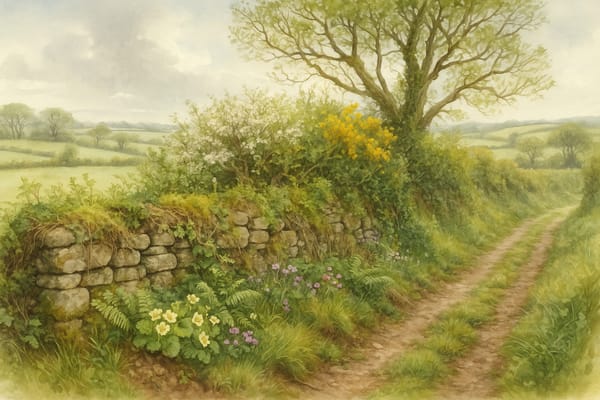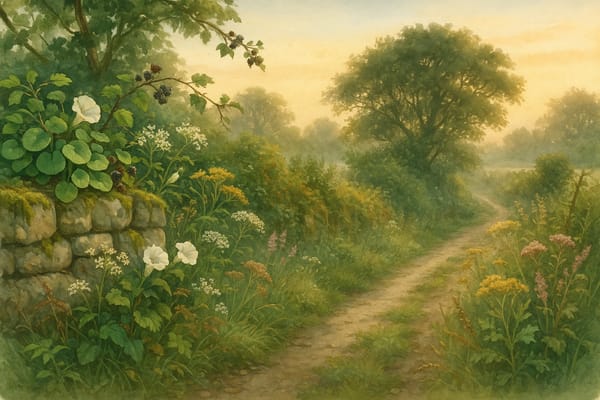There’s a quiet revolution happening in gardens across Cornwall. It doesn’t involve grand designs or radical planting schemes—but instead, a gentle, intentional practice of observation, record-keeping, and sharing what we see. Welcome to the world of wildlife monitoring and citizen science—a way for everyday gardeners to play a vital role in conservation, right from their own back gardens.
Why Garden Wildlife Recording Matters
Cornish gardens are part of a living landscape—a network of hedgerows, meadows, coastlines, and woodlands rich in life. Every time you notice a butterfly, a hedgehog, or a passing swallow, you’re witnessing part of a larger ecological story. By recording these sightings and sharing them, you contribute to vital data that helps conservationists understand how wildlife is faring in Cornwall—and beyond.
Citizen science has become one of the most powerful tools for monitoring biodiversity. From large national projects like the Big Butterfly Count to local surveys coordinated by Cornwall Wildlife Trust, community-gathered data is shaping how we protect nature. And anyone can take part.
Simple Ways to Observe Wildlife in Your Garden
Walk Slowly, Watch Closely
Spend a few minutes a day walking your garden or sitting quietly near a hedge, pond, or wild patch. Early mornings and evenings are often the best times to catch sight of shy visitors.
Watch the Night Shift
A torchlit wander can reveal moths, bats, and hedgehogs. Setting up a simple camera trap may even capture foxes, owls, or nocturnal mammals you’d never normally see.
Log What You See
Record the species, number, date, location (ideally with a grid reference or GPS), and any notable behavior. You don’t need to be an expert—a smartphone photo and a few notes are often enough.
| Wildlife Group | Best App | Why Use It? |
|---|
| Butterflies | Big Butterfly Count, iRecord Butterflies | National surveys, easy to use |
| Hedgehogs | Spot a Hog, Online Hedgehog Survey | Supports UK hedgehog conservation |
| Birds | BirdTrack, RSPB Big Garden Birdwatch | Tracks population trends |
| General Wildlife | iNaturalist, iRecord | Identifies species, links to conservation |
| Moths | Contact County Moth Recorder | Contributes to local moth recording |
Cornish Record-Keeping Tip:
Always submit records to the Environmental Records Centre for Cornwall and the Isles of Scilly (ERCCIS) to ensure your sightings help shape local conservation efforts.
Making Wildlife Watching a Family and Community Affair
Citizen science isn’t just for solo naturalists. It’s a brilliant way to bring people together.
- Family Projects: Give children “wildlife detective” roles during garden surveys.
- Neighbourhood Surveys: Work with neighbours to create a wildlife corridor across gardens.
- Community Groups: Join or support local projects like the Ponsanooth Community Wildlife Garden or Cornwall’s fungi, bat, and mammal recording groups.
Sharing your findings—whether through a school project, community noticeboard, or social media—helps spread awareness and inspires others to take part.
How Your Records Help Conservation
- Spotting Trends: From butterfly migrations to hedgehog declines, your records contribute to bigger-picture data.
- Supporting Research: Data from gardens feed into national and regional studies, including climate research and species protection plans.
- Guiding Action: Conservation bodies use citizen science data to prioritise efforts, shape policy, and allocate resources.
Even sightings of common species are valuable—changes in abundance or disappearance often signal broader environmental shifts.
The Rhythm of Wildlife Through the Seasons
Understanding when and why certain wildlife appears in your garden can make your observations even more meaningful:
| Season | Wildlife Highlights |
|---|
| Spring | Nesting birds, emerging insects, breeding amphibians |
| Summer | Peak insect activity, fledgling birds, active bats and hedgehogs |
| Autumn | Migrating birds, foraging mammals, overwintering insects |
| Winter | Feeding birds, hibernating mammals, early signs of spring in mild Cornish microclimates |
Supporting wildlife means thinking seasonally—providing food, water, shelter, and habitat all year round.
The Science Behind the Sighting: Why GPS and Good Records Matter
Accurate location data makes your records scientifically useful.
- Use apps with GPS to log sightings precisely.
- Double-check coordinates on a map before submitting rare species.
- For sensitive species, some apps automatically protect exact locations to prevent disturbance.
The clearer your data, the better it supports conservation science—helping researchers track habitat use, migration, and population changes over time.
First Steps to Start Your Citizen Science Journey
- Pick an app or project—Big Butterfly Count and iNaturalist are great for beginners.
- Record sightings regularly—A monthly check-in or even a casual weekly watch adds up.
- Submit your records—Make them count by sharing with ERCCIS or national databases.
- Stay curious—If you’re unsure what you’ve seen, use ID apps or ask in local wildlife groups.
- Share the joy—Citizen science thrives when communities get involved.
Final Thought
You don’t have to be a scientist to make a difference. Whether you’re counting butterflies on a sunny afternoon, spotting a hedgehog at dusk, or simply logging the birds at your feeder, every observation helps. In Cornwall’s rich mosaic of gardens, hedgerows, and coastlines, small actions add up to powerful change.
Through mindful observation, a simple smartphone app, and a little curiosity, you can be part of a movement that supports nature not just in your own garden—but across the whole of Cornwall.











